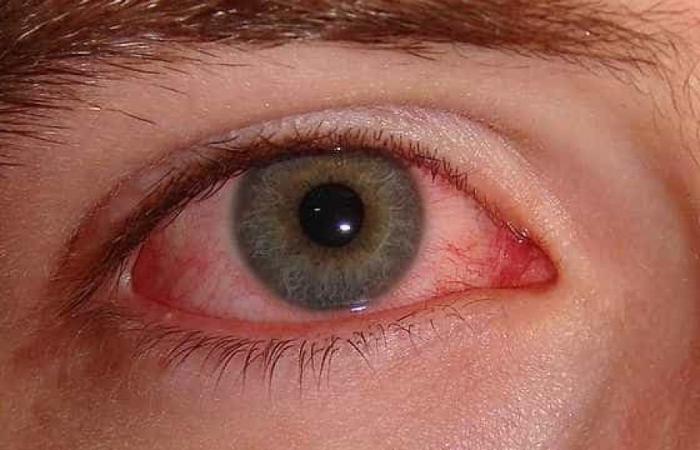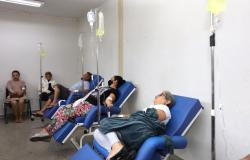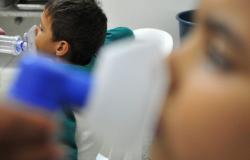O The 6th World Air Quality Report (IQAir), published at the end of February in Switzerland, investigated how air quality is affecting our health. The survey reveals that in 2023 the emission of simple particulate matter (PM2.5) in Brazil was 12.5 micrograms/m3 or 2.5 times above the 5 micrograms/m3 recommended by the WHO (World Health Organization).
It means that air quality in Brazil is a serious public health problem. This is because researchers point to PM2.5 as the smallest and most dangerous pollution particle. Because it is so small, it reaches the lungs and from there circulates throughout our body. The research data shows that the concentration of the pollutant found in Brazil was once higher, but the current quantity could compromise the development of the immune system and the cognitive capacity of children. Among adults, the possible effects are new cases of cancer, heart disease and lung scarring that worsens asthma, bronchitis and pneumonia.
For ophthalmologist Leôncio Queiroz Neto from the Penido Burnier Institute in Campinas, this research raises the alarm for eye health. This is because, the WHO estimate is that in Brazil 20% of the population has airway allergies – rhinitis or sinusitis. The arrival of autumn, he comments, indicates an increase in pollution and a drop in temperature. These environmental changes added to polluted air certainly increase the recurrence of allergic attacks and 6 out of 10 patients simultaneously present the condition in their eyes.
Signs and treatment of eye allergy
The ophthalmologist explains that the main symptoms of eye allergies are itching, red eyes, swollen eyelids and tearing. At the first symptom, it is recommended to schedule an ophthalmological consultation and apply cold compresses made with gauze and filtered water to the eyes to relieve discomfort and avoid scratching. This is because, he explains, rubbing or scratching the eyes weakens the collagen fibers in the cornea, the external lens of the eye that thins and deforms.
As these changes in the structure and shape of the cornea progress, he points out, they can cause keratoconus, the biggest cause of visual impairment among young people. For those who already have keratoconus, the recommendation is to always consult an ophthalmologist at the first discomfort. Eye allergy treatment varies depending on the severity of each case. For some patients, instilling antihistamine eye drops is sufficient. In more severe cases, treatment is carried out with eye drops containing corticosteroids and when the severity is extreme, immunosuppressants are indicated, always under the supervision of an ophthalmologist to avoid uncontrolled infection.
Screens aggravate dry eye
Queiroz Neto states that digital life causes dry eye syndrome to affect 24% of the population in all age groups. This is because we normally blink around twenty times per minute. In front of the monitor six to seven times. This dries out the eyes and can cause damage to the cornea, especially among contact lens wearers. Symptoms are blurred vision, burning and irritation in the eyes.
The ophthalmologist explains that among the elderly, dry eye can be caused by a deficiency in the production of the aqueous layer. In this case it is due to rheumatological or autoimmune diseases, hormonal changes such as menopause or andropause, use of antidepressants, anti-allergic or anti-hypertensive drugs that can compromise the production of the lacrimal glands. “The treatment involves implanting a plug in the tear gland that stimulates the drainage of the aqueous layer.”
The specialist comments that dry eye can also be of the evaporative type when there is obstruction of a small gland on the edge of the eyelid responsible for producing the oily layer. Queiroz Neto explains that evaporative dry eye treatment can be done with lubricating eye drops in mild or moderate cases, warm compresses on the eyelids and cleaning the edge of the eyelids with a cotton swab dipped in neutral shampoo.
When there is injury or obstruction in the Meibomian gland that produces the fatty layer of tears, treatment is carried out with 3 applications of pulsed light, monthly.
Clusters cause conjunctivitis
Queiroz Neto says that the drop in temperature in autumn increases crowds in closed spaces and spreads viral conjunctivitis, which can be caused by several viruses, the most common of which is the adenovirus, which also causes colds. Highly contagious, viral conjunctivitis has symptoms such as redness in the eyes, tearing, itching, foreign body sensation, burning, photophobia and blurred vision and viscous secretion.
Because it is highly contagious, women should avoid sharing makeup, pillowcases, towels, computer keyboards and other devices.
At the first discomfort, the ophthalmologist recommends applying compresses made with gauze and cold drinking water. Treatment involves anti-inflammatory and lubricating eye drops. In some cases, a membrane forms over the conjunctiva and is removed with a laser.
To prevent autumn eye diseases, it is important to stimulate immunity with a good night’s sleep, light physical activity, avoid activities in open spaces, and keep the body well hydrated by drinking water whenever you feel thirsty.






